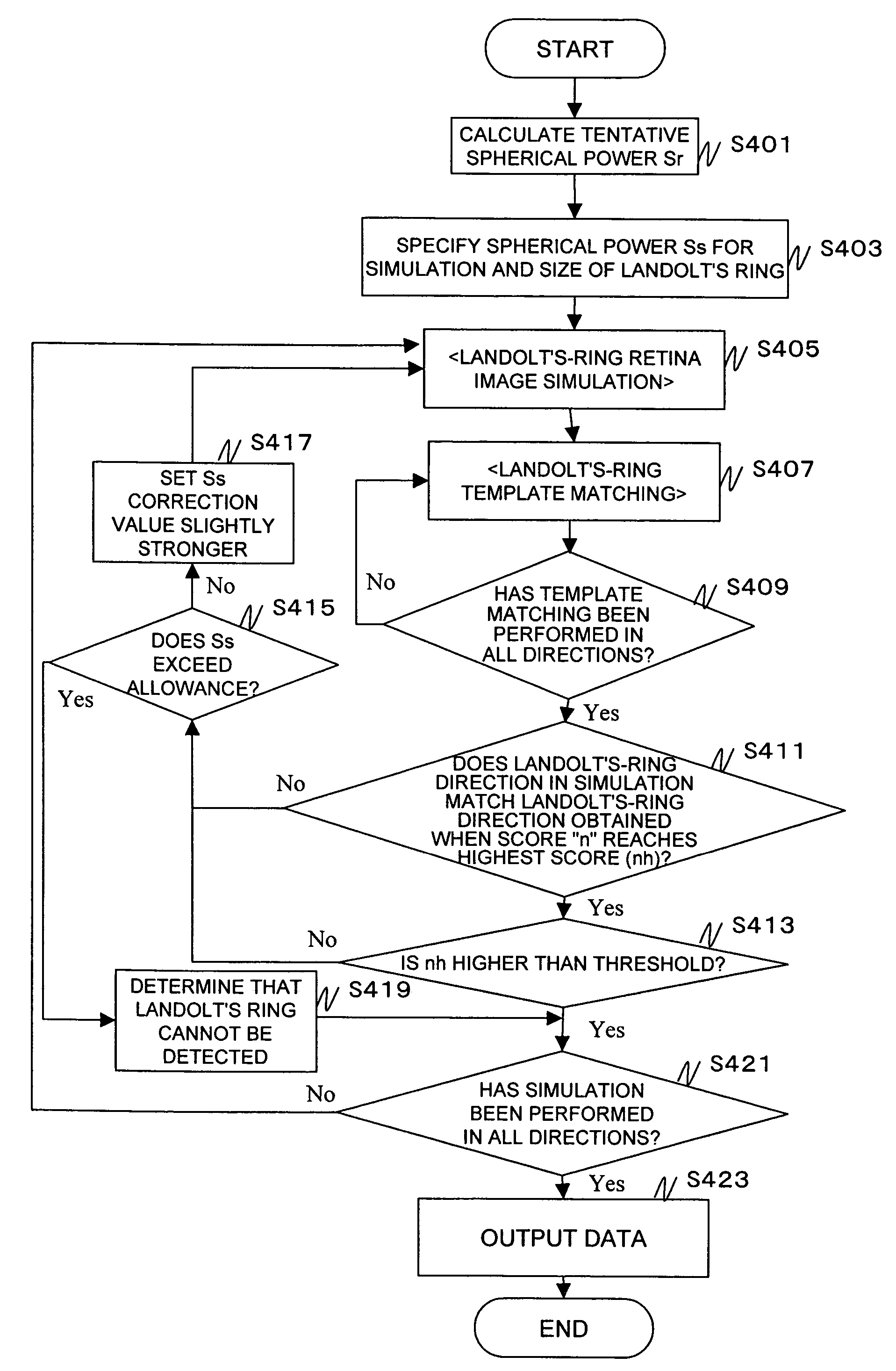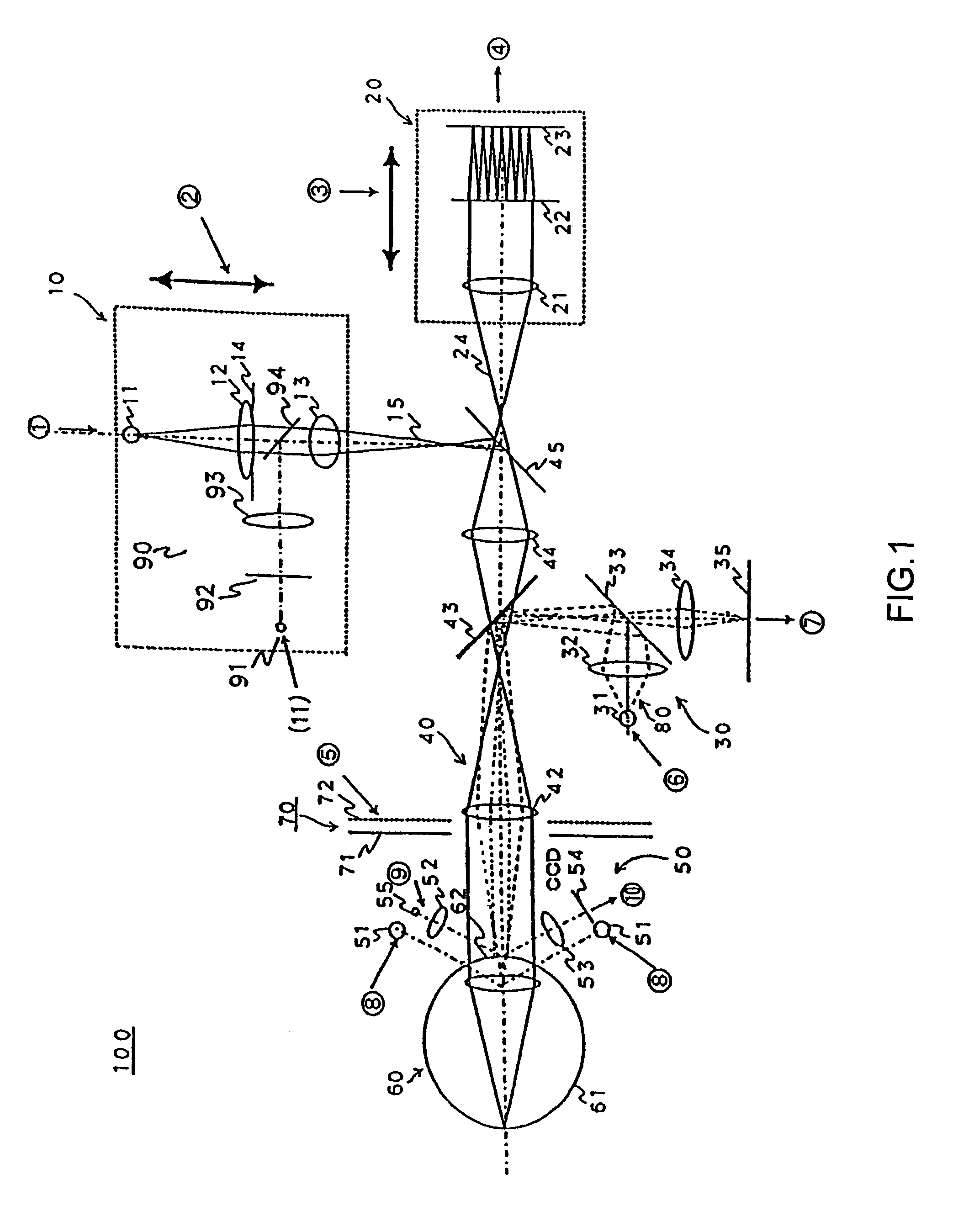Correction-factor determination apparatus and method
a correction factor and apparatus technology, applied in the field of correction factor determination apparatuses and methods, can solve the problems of insufficient evaluation of correction factors such as s, c, and differences in examinations, and achieve the effect of improving the way an image is seen
- Summary
- Abstract
- Description
- Claims
- Application Information
AI Technical Summary
Benefits of technology
Problems solved by technology
Method used
Image
Examples
first embodiment
4. Correction-Factor Determination Method (First Embodiment)
[0101]FIG. 6 is a flowchart of a correction-factor determination method according to a first embodiment.
[0102]The eye-characteristic measuring apparatus first aligns the X, Y, and Z axes at the pupil position of the eye under measurement (S101). The measuring apparatus next moves the movable block to its origin (S103). For example, the Hartmann plate and the Placido's ring are adjusted to a diopter of zero. The arithmetic part 210 measures eye optical-system data such as the total wavefront aberrations and the Zernike coefficients according to the measured received-light signals {circle around (4)}, {circle around (7)}, and / or (10) (S105). The arithmetic part 210 simulates how the eyesight test chart target is seen and generates target retina image data to calculate correction data (correction factor) (S107). The correction factor includes one of the spherical power (S), the astigmatic power (C), and the angle (A) of the as...
second embodiment
5. Correction-Factor Determination Method (Second Embodiment)
[0176]FIG. 16 is a flowchart of a correction-factor determination method according to a second embodiment. Processes at steps S101 to S105 are the same as in the first embodiment. Then, the arithmetic part 210 calculates correction data for the spherical power (S151). As a specific process thereof, a process described in “4-1. Correction data calculation (spherical power-1)” or “4-2. Correction data calculation (spherical power-2)” can be used.
[0177]Next, the correction-factor setting part 213 of the arithmetic part 210 subtracts a value (in this case, C / 2) corresponding to the astigmatic power C from the obtained spherical power S to specify the initial value of the spherical power S. This is performed because the fact that the astigmatic power is obtained at a position where the back focal line is almost on the retina is taken into account. The value of C may be obtained from the refractive power or the wavefront aberrat...
third embodiment
6. Correction-Factor Determination Method (Third Embodiment)
[0179]FIG. 17 is a flowchart of a correction-factor determination method according to a third embodiment. Processes at steps S101 to S153 are the same as in the second embodiment. Then, the arithmetic part 210 finely adjusts the spherical power (S161), and in step S109, the arithmetic part 210 outputs data in the same way as in the above-described embodiment.
(Spherical-Power Fine Adjustment)
[0180]FIG. 18 shows a flowchart of spherical-power fine adjustment.
[0181]In step S451, as described above, the arithmetic part 210 specifies a spherical power Ss used in simulation according to the calculated S, C, and A. Then, the arithmetic part 210 slightly changes the correction value of Ss (for example, Ss−0.25D, Ss+0.25D) (S601). In this case, slightly changed Ss should fall in Ss±nΔS, a range of change specified in advance. For example, when ΔS=0.2 and “n”=0, 1, 2, and 3, changed values would be Ss−0.6, Ss−0.4, Ss−0.2, Ss, Ss+0.2,...
PUM
 Login to View More
Login to View More Abstract
Description
Claims
Application Information
 Login to View More
Login to View More - R&D
- Intellectual Property
- Life Sciences
- Materials
- Tech Scout
- Unparalleled Data Quality
- Higher Quality Content
- 60% Fewer Hallucinations
Browse by: Latest US Patents, China's latest patents, Technical Efficacy Thesaurus, Application Domain, Technology Topic, Popular Technical Reports.
© 2025 PatSnap. All rights reserved.Legal|Privacy policy|Modern Slavery Act Transparency Statement|Sitemap|About US| Contact US: help@patsnap.com



